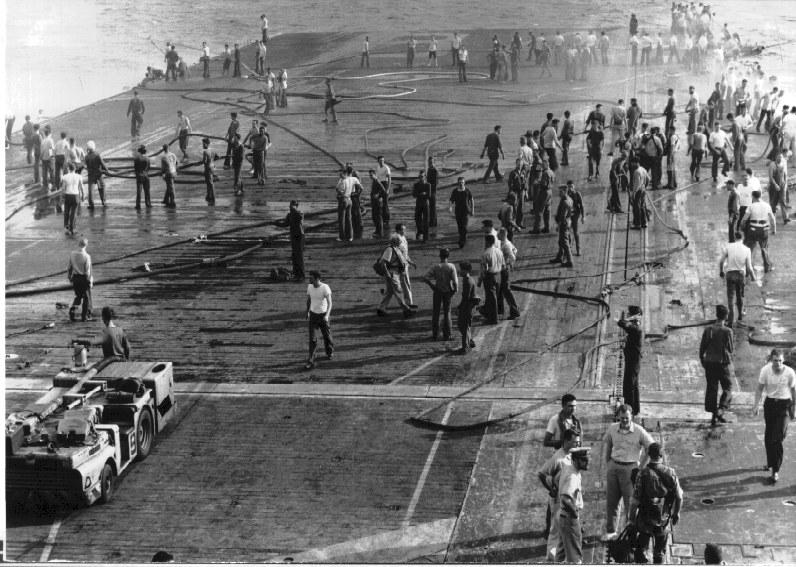On 26 October 1966, there was an aircraft flare fire aboard the aircraft carrier USS ORISKANY operating in the Gulf of Tonkin in Southeast Asia. Two sailors were re-stowing unexpended MK-24 Mod 3 Flares when one was accidentally dropped. The igniter had not been reset to SAFE. As it dropped, the safety lanyard was inadvertently pulled. This actuated the flare. For reasons known only to him, one of the sailors picked up the armed flare, threw it into the magazine locker, and closed the door. Some 2.75-inch rocket warheads loaded with Composition B were stowed in that locker.
Shortly after the flare ignited in the locker, the intense heat caused a 2.75 rocket warhead in the locker to detonate sending fire and smoke into the hangar bay. This was followed by a second warhead explosion that spread fire throughout the entire hangar deck and in the forward portion of the ship. Finally, heat caused a liquid oxygen tank to explode. Before the fires were completely under control, 44 sailors had died (43 from asphyxiation and one from burns) and 156 had been injured. Beside the material damage to the ship, two helicopters and an A-4E aircraft were destroyed and three A-4E aircraft were damaged. The estimated cost of the material damage was eleven million dollars. The damage and the causalities would have been considerably lower had it not been for the warheads detonating in the fire.
This was not the first ordnance accident involving the detonation of sensitive ordnance aboard the ORISKANY. On 6 March 1953 a Corsair aircraft returning from a strike mission on a North Korean supply center had landed on the flight deck carrying a bomb that had failed to release during the mission. As the plane landed, the bomb broke loose, bounced twice and detonated.
In this case, the bomb fragments pierced the fuel tanks on some F9F Panther Jet fighters in the hanger deck. The hanger bay was flooded with jet fuel but the fire fighting and repair parties controlled the flooding. Fortunately, there was no other ordnance involved and thus there were no secondary explosions to complicate the damage control efforts. The ORISKANY was fully operational on the next day. Two sailors were killed and fifteen were wounded as a result of that accident.18
18U.S.S. ORISKANY, Press release of 10 March 1953, U.S. Naval Institute files, Naval Academy, Annapolis, MD
